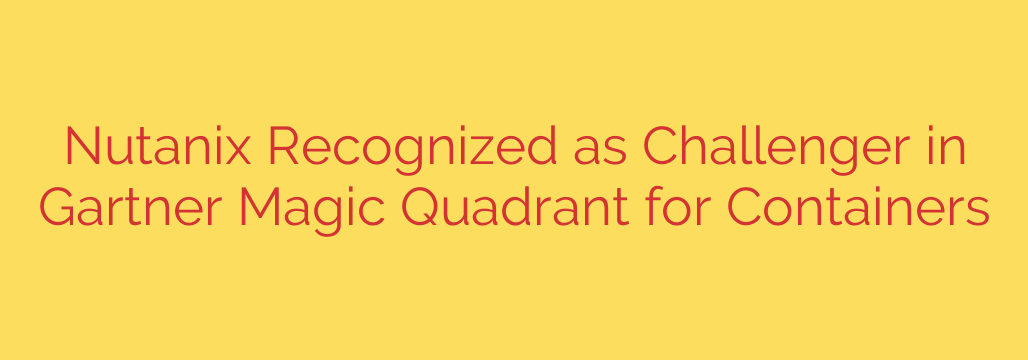
Simplifying Enterprise Kubernetes: How Integrated Platforms Are Changing the Game
Kubernetes has become the de facto standard for orchestrating containers, empowering organizations to build, deploy, and scale modern applications with unprecedented agility. However, this power comes with a steep learning curve. For many IT teams, managing the underlying infrastructure, ensuring security, and handling day-to-day operations for Kubernetes can be a complex and resource-intensive challenge.
The market is maturing, and enterprises are now seeking more than just a basic container orchestrator. They need a complete, integrated platform that simplifies the entire application lifecycle, from development to production. The focus is shifting from DIY solutions cobbled together from multiple vendors to unified platforms that reduce operational overhead and bridge the gap between DevOps and IT Operations.
Recent industry analysis, including the prestigious Gartner Magic Quadrant for Container Management, has highlighted the rise of strong “Challengers” in this space—companies that deliver powerful, well-executed solutions for the modern enterprise. One such platform gaining significant traction is the Nutanix Cloud Platform (NCP), powered by the Nutanix Kubernetes Engine (NKE). This recognition underscores a critical market trend: the demand for solutions that make enterprise-grade Kubernetes simple, scalable, and secure.
What Defines a Modern Container Management Platform?
An effective enterprise Kubernetes solution must address the core challenges that hinder adoption. It’s not just about spinning up clusters; it’s about managing them efficiently across their entire lifecycle in any environment.
Here are the key capabilities that are setting leading platforms apart:
Unified Hybrid and Multicloud Operations: The future is hybrid. A top-tier platform must provide a consistent operational experience for Kubernetes clusters, whether they are running in an on-premises data center, at the edge, or in public clouds like AWS and Azure. This eliminates operational silos and allows teams to manage their entire container environment from a single control plane.
Simplified Day-2 Operations: Deploying a Kubernetes cluster is just the beginning. The real work lies in ongoing management, including monitoring, logging, scaling, and upgrading. Leading platforms automate these complex tasks, providing one-click upgrades and simple scaling to free up IT teams to focus on delivering value instead of managing infrastructure.
Integrated Persistent Storage for Stateful Applications: Early container adoption focused on stateless applications. Today, running databases, message queues, and other stateful workloads on Kubernetes is a critical requirement. This demands a robust and integrated storage solution. Platforms that offer built-in, high-performance persistent storage (like Nutanix Volumes and Files) solve a major pain point, making it easy to run complex, data-intensive applications on Kubernetes.
Built-in Security and Governance: Security cannot be an afterthought. An enterprise-ready platform must provide a secure-by-default environment. This includes features like automated security hardening based on industry benchmarks, network microsegmentation to isolate applications, and role-based access control (RBAC) to ensure that developers and operators only have the permissions they need.
Actionable Advice for Your Kubernetes Strategy
As you evaluate solutions for your organization, consider the following strategic points:
- Prioritize Operational Simplicity: Look beyond the feature list and assess the total cost of ownership (TCO). A platform that simplifies management and reduces the need for specialized skills will deliver far more value in the long run.
- Plan for Stateful Workloads from Day One: Don’t assume you will only run stateless apps. Ensure your chosen platform has a clear and powerful strategy for providing persistent, reliable, and scalable storage for your most critical data services.
- Choose a Platform That Unites, Not Divides: The ideal solution should bring your DevOps and IT Ops teams together. Find a platform that provides the agility developers need while offering the control, security, and governance that IT operations requires.
The container management landscape is evolving rapidly. The solutions that are gaining momentum are those that abstract away the complexity of Kubernetes without sacrificing its power. By focusing on a unified, software-defined approach that covers compute, storage, networking, and security, organizations can finally unlock the full potential of cloud-native applications and build a resilient foundation for future innovation.
Source: https://datacenternews.asia/story/nutanix-named-a-challenger-in-2025-gartner-magic-quadrant-for-containers








